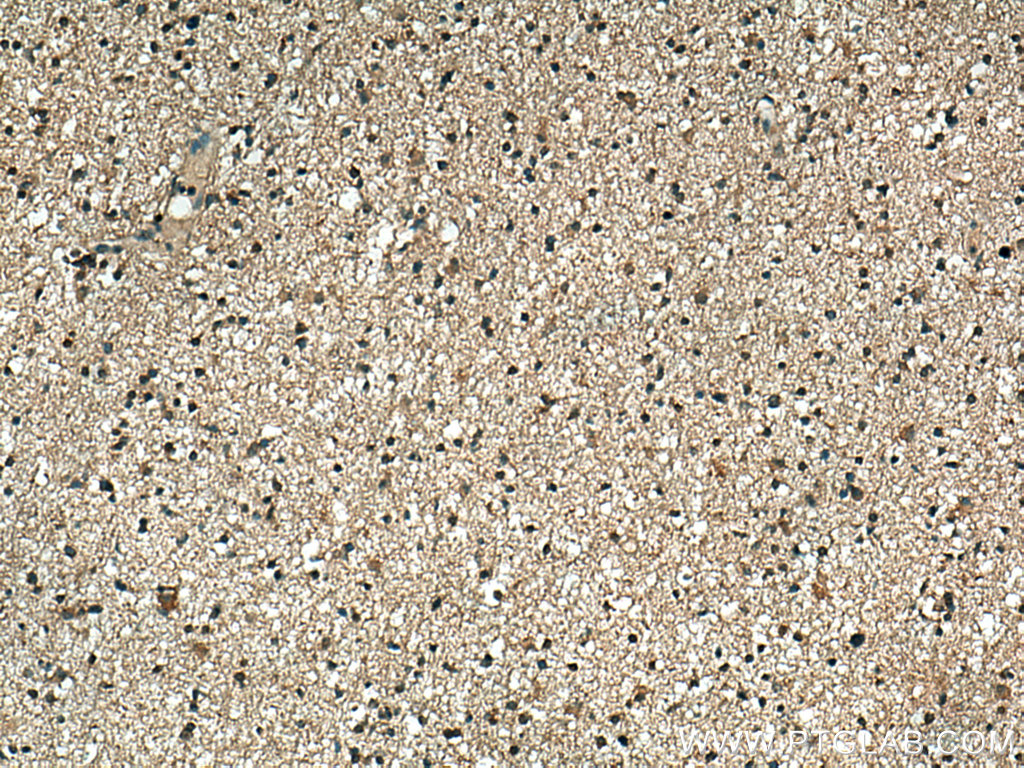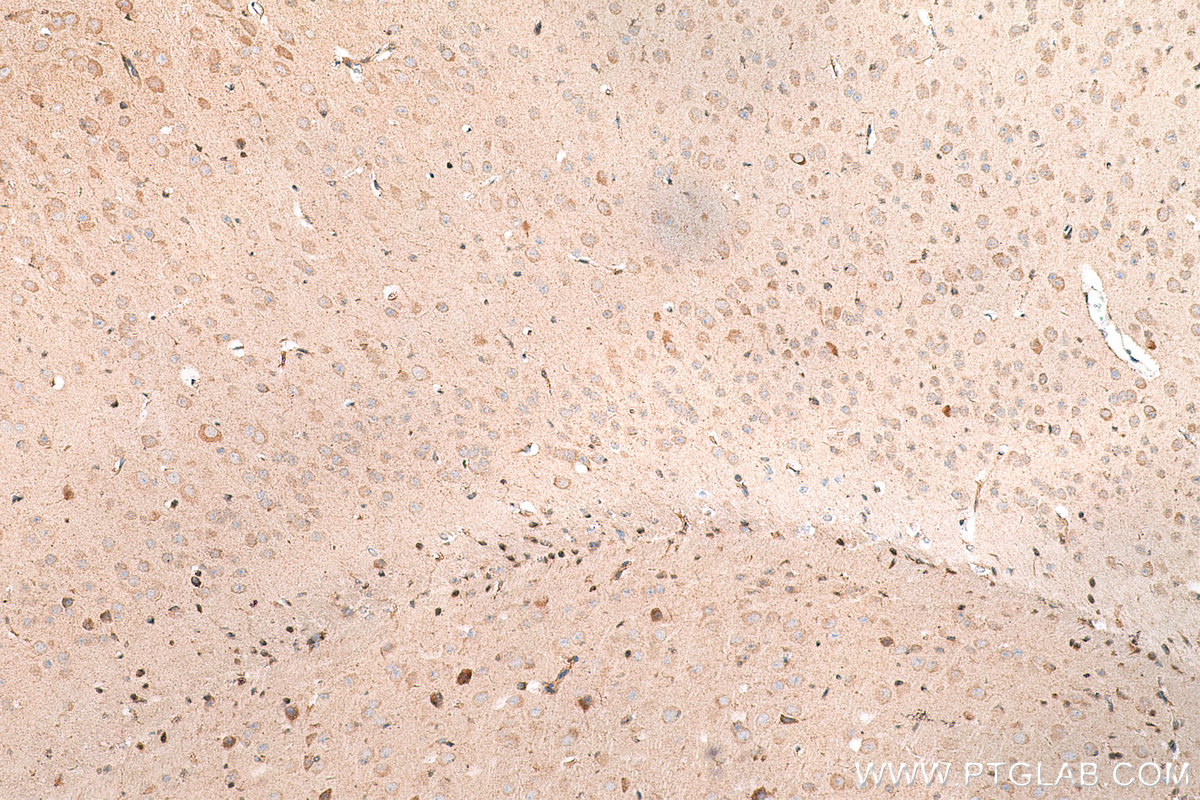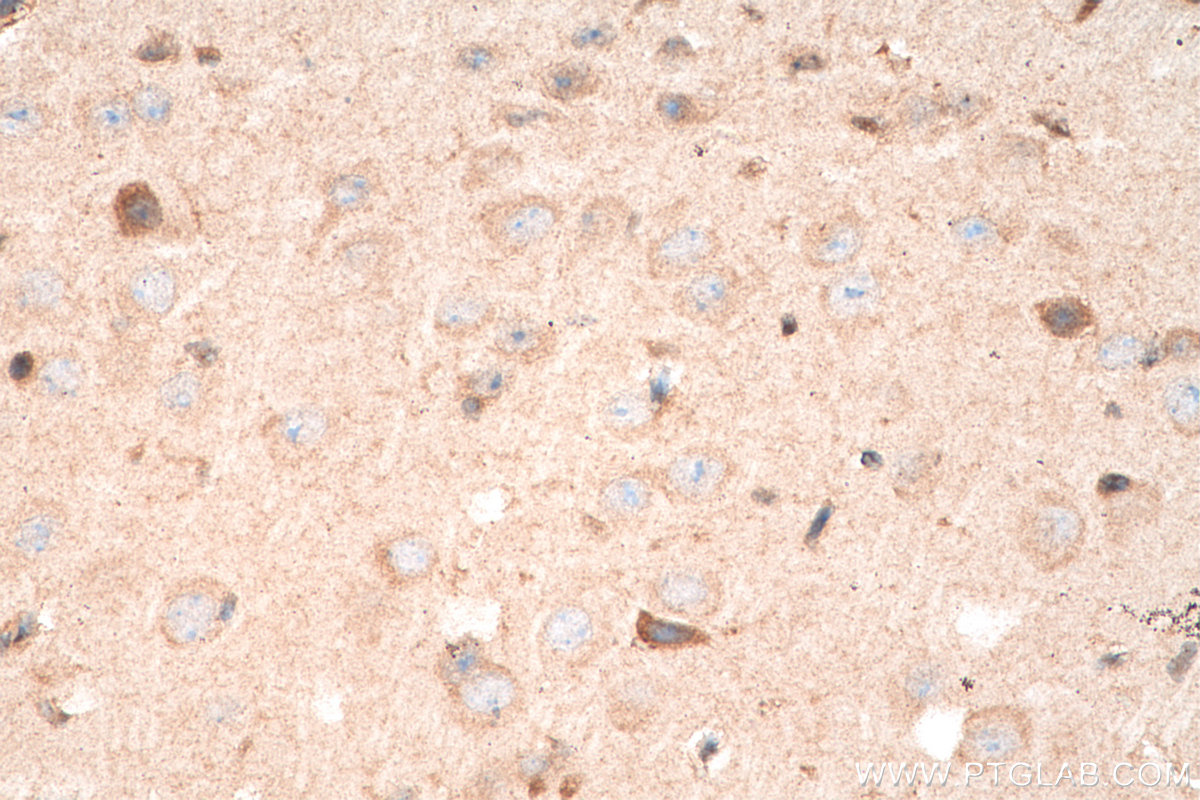BDNF Polyclonal antibody
BDNF Polyclonal Antibody for WB, IHC, IF/ICC, ELISA
Host / Isotype
Rabbit / IgG
Reactivity
human, mouse, rat
Applications
WB, IHC, IF/ICC, ELISA and More (1)
Conjugate
Unconjugated
128
验证数据展示
经过测试的应用
| Positive WB detected in | C6 cells, SH-SY5Y cells, PC-12 cells |
| Positive IHC detected in | human gliomas tissue, mouse brain tissue, mouse cerebellum tissue Note: suggested antigen retrieval with TE buffer pH 9.0; (*) Alternatively, antigen retrieval may be performed with citrate buffer pH 6.0 |
| Positive IF/ICC detected in | PC-12 cells |
推荐稀释比
| Application | Dilution |
|---|---|
| Western Blot (WB) | WB : 1:500-1:2000 |
| Immunohistochemistry (IHC) | IHC : 1:200-1:800 |
| Immunofluorescence (IF)/ICC | IF/ICC : 1:200-1:800 |
| It is recommended that this reagent should be titrated in each testing system to obtain optimal results. | |
| Sample-dependent, Check data in validation data gallery. | |
产品信息
28205-1-AP targets BDNF in WB, IHC, IF/ICC, ELISA applications and shows reactivity with human, mouse, rat samples.
| Tested Applications | WB, IHC, IF/ICC, ELISA Application Description |
| Cited Applications | WB, IHC, IF |
| Tested Reactivity | human, mouse, rat |
| Cited Reactivity | human, mouse, rat |
| Immunogen | BDNF fusion protein Ag28276 种属同源性预测 |
| Host / Isotype | Rabbit / IgG |
| Class | Polyclonal |
| Type | Antibody |
| Full Name | brain-derived neurotrophic factor |
| Synonyms | Brain-derived neurotrophic factor, brain derived neurotrophic factor, BDNF precursor form |
| Calculated Molecular Weight | 247 aa, 28 kDa |
| Observed Molecular Weight | 28-30 kDa |
| GenBank Accession Number | BC029795 |
| Gene Symbol | BDNF |
| Gene ID (NCBI) | 627 |
| RRID | AB_2818984 |
| Conjugate | Unconjugated |
| Form | Liquid |
| Purification Method | Antigen affinity purification |
| UNIPROT ID | P23560 |
| Storage Buffer | PBS with 0.02% sodium azide and 50% glycerol pH 7.3. |
| Storage Conditions | Store at -20°C. Stable for one year after shipment. Aliquoting is unnecessary for -20oC storage. |
背景介绍
1) What is BDNF?
BDNF (brain-derived neurotrophic factor) is a small secreted growth factor that is important for the development and plasticity of the central nervous system and vital for long-term memory. Selected polymorphisms of BDNF have been shown to increase susceptibility to memory impairment and selected eating and mental disorders.
2) FAQs for BDNF
A) I can detect more than one band in my samples
BDNF is a neurotrophin that is a subject of maturation by proteolytic cleavage. The precursor protein (pre-proBDNF) is first cleaved to proBDNF (~34 kDa) by removing a signal peptide, and then to a mature form of BDNF (14 kDa). Additionally, (pre-)proBDNF can form dimers that run between 50 and 60 kDa, and a minor truncated form of proBDNF running at 28 kDa has also been reported (PMID: 11152678).
实验方案
| Product Specific Protocols | |
|---|---|
| WB protocol for BDNF antibody 28205-1-AP | Download protocol |
| IHC protocol for BDNF antibody 28205-1-AP | Download protocol |
| IF protocol for BDNF antibody 28205-1-AP | Download protocol |
| Standard Protocols | |
|---|---|
| Click here to view our Standard Protocols |
发表文章
| Species | Application | Title |
|---|---|---|
Autophagy Trehalose induces autophagy via lysosomal-mediated TFEB activation in models of motoneuron degeneration. | ||
Mater Today Bio Injectable hyaluronic acid hydrogel loaded with BMSC and NGF for traumatic brain injury treatment. | ||
ACS Appl Mater Interfaces Reactive Oxygen Species Scavenging Functional Hydrogel Delivers Procyanidins for the Treatment of Traumatic Brain Injury in Mice. | ||
Aging Dis Dietary Salt Disrupts Tricarboxylic Acid Cycle and Induces Tau Hyperphosphorylation and Synapse Dysfunction during Aging | ||
Neurobiol Stress Low-dose S-ketamine exerts antidepressant-like effects via enhanced hippocampal synaptic plasticity in postpartum depression rats. | ||
Phytother Res Neuroinflammation inhibition and neuroprotective effects of purpurin, a potential anti-AD compound, screened via network proximity and gene enrichment analyses |








